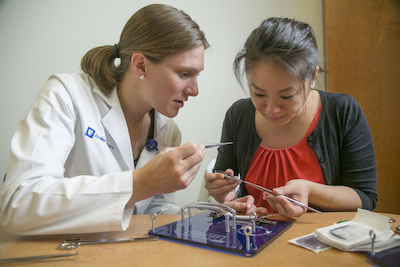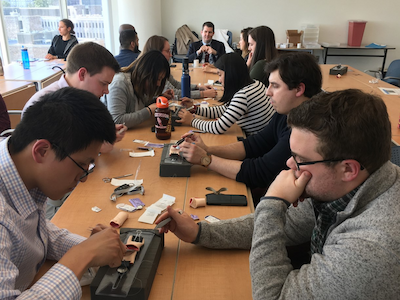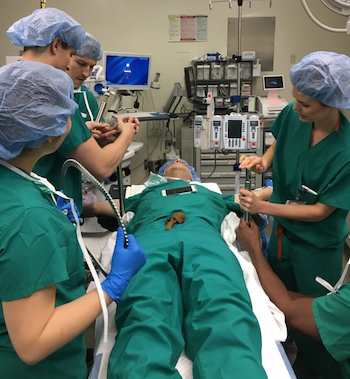
Opportunities for medical students to participate actively and in a hands-on manner in patient care are frequently limited. STAR’s “hands-on” sessions are designed to provide MS-4s with applied experience in common surgical tasks with mentoring by residents and faculty.
The aim of these sessions is to help students grasp the fundamentals of common surgical tasks while practicing multiple repetitions under direct supervision. This will allow them to enter residency ahead of their peers, increase subsequent opportunities for autonomy in their technical training, and enable them to move on to more advanced skills more rapidly.
Sessions

Proctored by vascular and transplant faculty as well as senior residents, this session introduces students to the efficient use of appropriate instruments used in sewing vessels together.
Working with synthetic materials and utilizing multiple technical approaches, student apply these skills later in the human fresh tissue lab on cadaveric arteries.

This session provides students the opportunity to learn how to hand-sew a bowel anastomosis with direct supervision and guidance from faculty.
After practicing on simulated bowel material initially, students will apply these skills to real tissue later in the course when working in the human fresh tissue lab.

DeBakeys and Adsons are easy enough to identify, but what about the rest of the instruments on the Mayo stand? This session takes students into the operating room where they learn the names and use of both open and laparoscopic instruments from surgeons and OR staff.
They also have a chance to set up self-retaining retractor systems in order to gain familiarity with the process. By the end of the session, students should feel comfortable asking for the appropriate instrument by the correct name for common surgical procedures.
Laparoscopic surgery increasingly dominates the practice of general surgeon. In this session, minimally invasive surgery faculty and fellows come to the Simulation Center to provide tips & tricks on laparoscopic surgical technique.
Students then have the chance to apply these skills on common laparoscopic training systems in a proctored setting. This guided practice catalyzes skill development that students can deploy in the human fresh tissue lab later in the course and throughout their residencies to follow.
Students will also be introduced to the Da Vinci robot. They will work with intuitive representatives to become familiar with docking the robot and bedside-assisting. Students will also have the opportunity to begin working on simulation modules at the console.
Preparation and presentation in a morbidity and mortality (M&M) conference is a common experience in surgery residency. In this series of sessions, we teach you how to prepare for an M&M and provide examples of ideal presentations.
Students are then broken into groups, given cases to prepare, and present to their peers as well as to a resident moderator. This practice will help students feel comfortable with the format and style of an excellent M&M presentation in order to prepare them for the experience during residency.